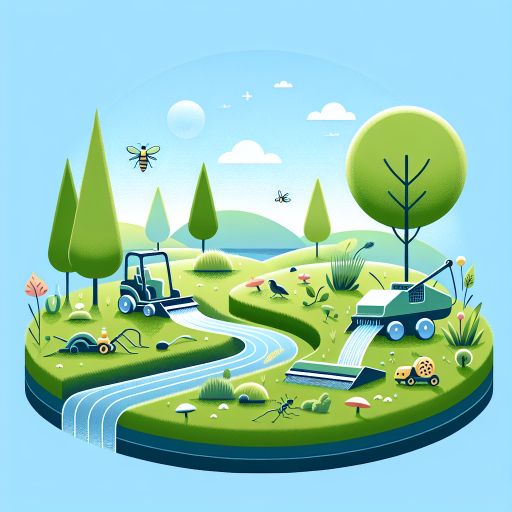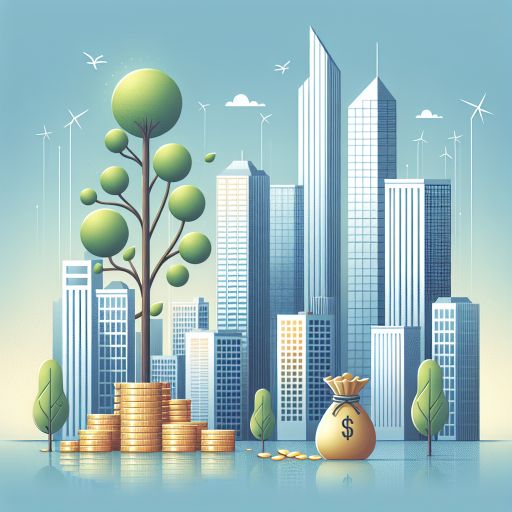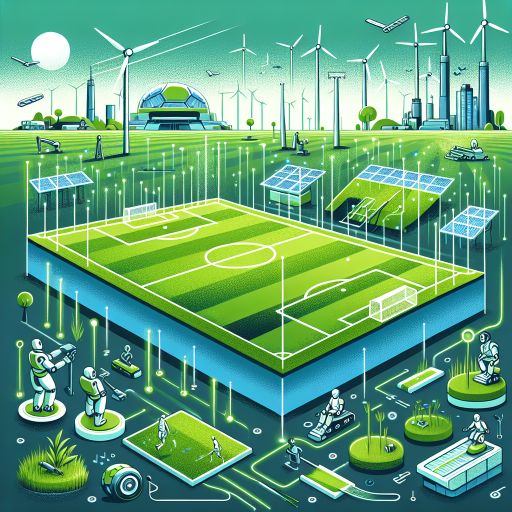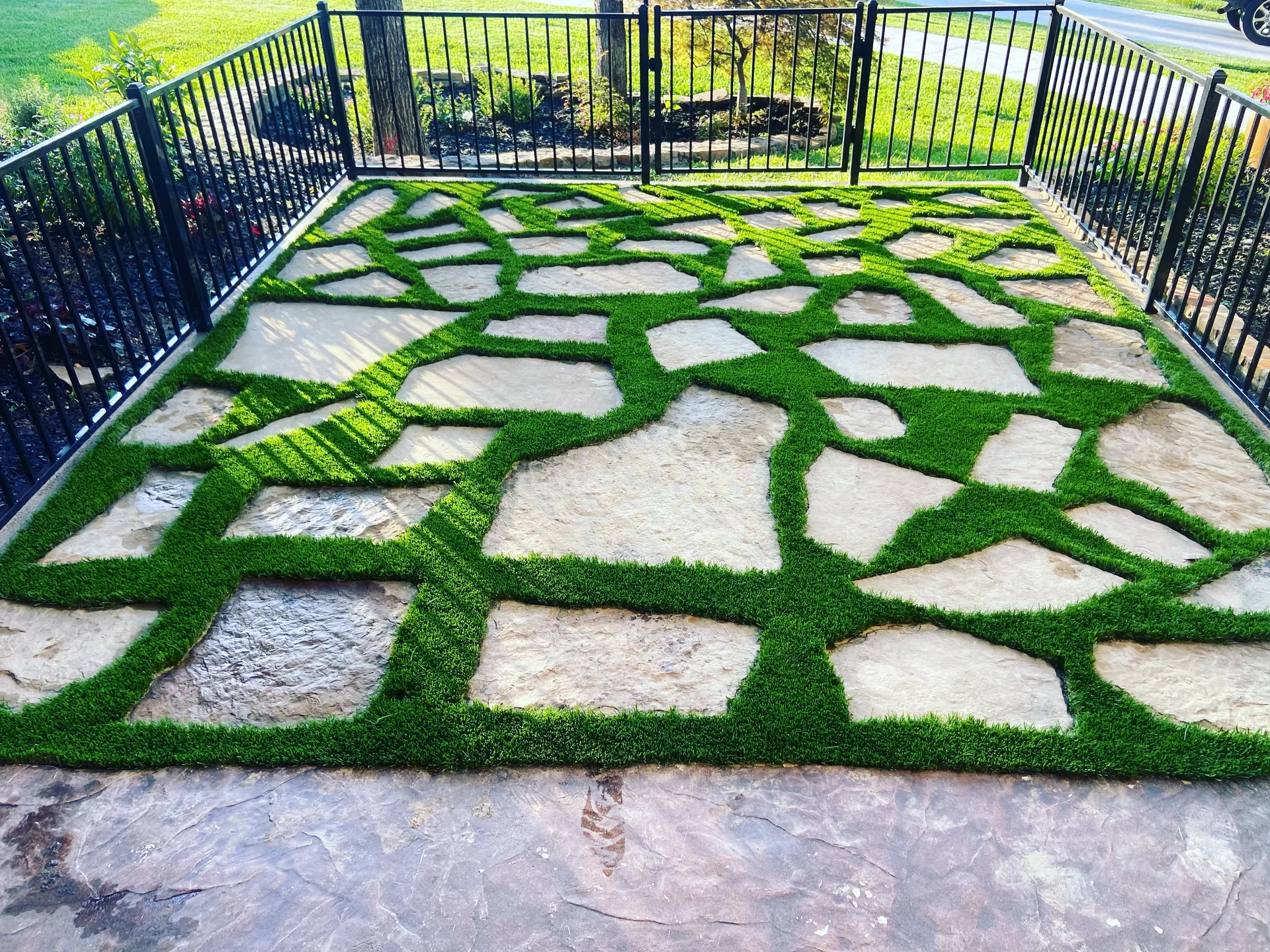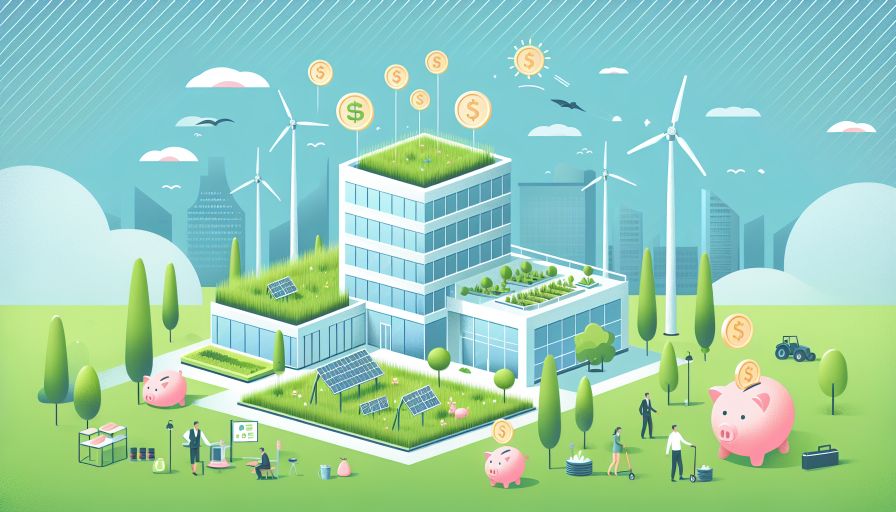
- Introduction to Artificial Grass in Commercial Properties
- Economic Advantages of Artificial Grass for Businesses
- Environmental Benefits of Using Artificial Grass
- Installation and Maintenance Efficiency Compared to Natural Grass
- Long-Term Return on Investment for Commercial Properties
- Case Studies of Commercial Properties Using Artificial Grass
- Future Trends in Artificial Grass Technology and Usage
Introduction to Artificial Grass in Commercial Properties
In recent years, artificial grass has increasingly become a popular choice for commercial properties. Businesses ranging from corporate offices to sports complexes are recognizing the practical and economic benefits of using synthetic turf. Leading companies like Prime Design Turf have been at the forefront of this transformation, providing high-quality and sustainable solutions that meet diverse commercial needs.
Prime Design Turf, a prominent provider in the Dallas-Fort Worth area, specializes in transforming spaces with their premium synthetic turf. With over 20 years of experience, they have achieved excellence in various applications, including landscaping, playgrounds, sports fields, and even pet-friendly zones. Their commitment to creative design, meticulous installation, and unbeatable prices has made them a preferred partner for many commercial establishments.
Why Artificial Grass? The Basics
Artificial grass, also known as synthetic turf, is made from durable polyethylene, nylon, or polypropylene fibers that mimic the look and feel of natural grass. It is engineered to withstand heavy foot traffic and adverse weather conditions, making it an excellent option for commercial properties. The key advantages span economic and environmental aspects, leading to increased adoption across various sectors.
Key Features of Prime Design Turf’s Synthetic Grass
- High Durability: Designed to withstand high traffic and various weather conditions.
- Low Maintenance: Requires minimal upkeep compared to natural grass.
- Eco-Friendly: Reduces water usage and eliminates the need for harmful pesticides and fertilizers.
- Cost-Effective: Reduces long-term maintenance costs significantly.
- Versatile Applications: Ideal for landscapes, playgrounds, sports fields, and pet zones.
Commercial Applications
Prime Design Turf’s solutions have been deployed across a variety of commercial settings:
- Corporate Landscaping: Enhances visual appeal and maintains aesthetic quality with minimal effort.
- Playgrounds and Parks: Provides safe, durable surfaces for children and athletic activities.
- Sports Fields: Delivers high-performance surfaces that meet regulatory standards.
- Pet Zones: Creates toxic-free environments that are safe for pets and easy to clean.
Key Benefits
The benefits of using artificial grass in commercial properties can be broadly categorized into economic and environmental advantages. Here’s a summary:
| Economic Benefits | Environmental Benefits |
|---|---|
| Reduced water costs | Water conservation |
| Lower maintenance expenses | Reduction in the use of chemicals |
| Enhanced property value | Reduced carbon footprint |
As demonstrated, the advantages of switching to artificial grass for commercial properties are manifold. By incorporating solutions like those offered by Prime Design Turf, businesses can not only save money but also contribute to environmental sustainability.
Economic Advantages of Artificial Grass for Businesses
Businesses are continually looking for ways to reduce costs and improve their financial outcomes. One area that presents significant economic advantages is the use of artificial grass for commercial properties.
Cost Savings on Water Consumption
Natural grass requires regular watering, which can be a substantial expense, particularly in regions facing water scarcity. According to the Environmental Protection Agency (EPA), outdoor water use accounts for about 30% of total water consumption in the United States, with the figure reaching up to 60% in arid regions. Businesses that switch to artificial grass can realize significant savings in water bills.
Maintenance Cost Reduction
Maintaining natural grass involves recurring costs such as mowing, fertilizing, pest control, and re-seeding. Artificial grass eliminates most of these needs, reducing ongoing maintenance expenses. A study by the Synthetic Turf Council found substantial savings in maintenance costs when switching from natural to artificial grass.
| Expense Type | Annual Savings |
|---|---|
| Watering | Up to 50% reduction |
| Mowing | 100% reduction |
| Fertilizing | Up to 100% reduction |
| Pest Control | Up to 100% reduction |
Increased Property Value
Artificial grass enhances the aesthetic appeal of commercial properties, potentially increasing their market value. Real estate experts note that well-maintained landscapes often contribute to higher property evaluations and quicker sales or leasing cycles.
Durability and Longevity
Artificial grass is designed to withstand heavy use and various weather conditions, making it more durable than natural grass. This long-term durability translates to lower replacement costs over time. Typically, high-quality artificial grass can last between 8 to 20 years, depending on usage and environmental factors, offering a reliable long-term solution for businesses.
Productivity Benefits
For businesses with outdoor recreational areas or employee relaxation zones, artificial grass can provide a consistent and appealing surface year-round. This can contribute to improved employee satisfaction and productivity, as well as reduce downtime associated with grass maintenance.
In summary, the economic advantages of artificial grass for commercial properties are numerous. They encompass significant savings in water and maintenance costs, potential increases in property value, extended durability, and benefits to employee productivity, contributing to an overall positive financial impact for businesses.
Environmental Benefits of Using Artificial Grass
Artificial grass offers several environmental benefits that make it a viable option for commercial properties aiming to reduce their ecological footprint. By opting for synthetic turf over natural grass, businesses can contribute positively to various environmental aspects.
Water Conservation: One of the most significant environmental advantages of artificial grass is its ability to conserve water. According to the Environmental Protection Agency (EPA), landscaping accounts for nearly one-third of all residential water use, amounting to nearly 9 billion gallons per day. Artificial grass eliminates the need for watering, thereby saving substantial amounts of this precious resource.
Reduction in Pesticides and Fertilizers: Natural grass maintenance typically involves the use of pesticides, herbicides, and fertilizers. These chemicals can leach into the soil and waterways, causing pollution and potentially harming local ecosystems. Artificial grass requires no such chemicals, reducing the risk of environmental contamination and promoting a healthier surrounding environment.
Lower Carbon Footprint: Lawn maintenance equipment such as mowers, trimmers, and aerators often runs on gasoline, leading to carbon dioxide emissions. According to the California Air Resources Board, running a gas-powered lawnmower for an hour can produce as much pollution as driving a car for 300 miles. Artificial grass reduces the need for such equipment, thereby decreasing greenhouse gas emissions and helping to combat climate change.
Reduction in Waste: Natural grass often generates green waste, including clippings and trimmings, which require proper disposal. In contrast, artificial grass generates little to no green waste. This results in reduced demand for waste management resources and services.
Preservation of Natural Habitats: In many urban settings, green spaces often replace natural habitats. By using artificial grass, commercial properties can maintain aesthetically pleasing landscapes without contributing to habitat disruption or destruction. This aids in the preservation of local biodiversity.
In summary, artificial grass offers a range of environmental benefits such as water conservation, reduced chemical use, lower carbon emissions, minimal waste production, and habitat preservation. These benefits make it a compelling option for businesses seeking to improve their environmental sustainability.
Installation and Maintenance Efficiency Compared to Natural Grass
The installation and maintenance processes of artificial grass are notably more efficient compared to natural grass. One key advantage is the lower upfront and ongoing labor requirements. Professionals can install artificial grass relatively quickly, often within a few days for average commercial properties, significantly reducing the downtime for businesses when compared to the time needed to lay and grow natural sod.
After installation, maintenance tasks such as mowing, watering, and fertilizing are virtually eliminated. This reduction in maintenance not only cuts down on labor costs but also minimizes the use of water and chemicals. The Environmental Protection Agency (EPA) reports that traditional grass lawns consume up to 60% of urban freshwater use. Artificial grass, on the other hand, requires no watering, leading to substantial water conservation and cost savings.
Moreover, while natural grass requires regular fertilization to maintain its health and appearance, artificial grass does not. This advantage significantly reduces the presence of harmful chemicals that often runoff into waterways, contributing positively to overall environmental health. In addition, pest control practices also become less frequent, as artificial turf does not provide a habitat for insects and rodents, further decreasing the use of potentially harmful pesticides.
Regarding cleaning and upkeep, artificial grass typically only requires occasional rinsing and brushing to maintain its appearance and functionality. Some high-traffic areas might need more frequent attention, but this is generally limited compared to the continuous upkeep required for natural grass. For commercial properties, this means lower operational costs and less distraction from core business activities.
Lastly, artificial grass remains clean and green year-round, without the seasonal patchiness and browning that can affect natural grass. This attribute not only enhances aesthetic appeal but also ensures that commercial properties maintain a polished and professional look that can be important for customer impressions and employee morale.
In summary, the installation and maintenance of artificial grass involve reduced labor intensity, significant water savings, and minimal need for chemical treatments. These factors combine to make artificial grass a highly efficient and sustainable option for commercial properties when compared to natural grass.
Long-Term Return on Investment for Commercial Properties
One of the critical considerations for commercial properties is the long-term return on investment (ROI) when implementing artificial grass. The ROI encompasses both financial and operational efficiencies over extended periods, balancing initial costs with ongoing savings.
Initial Cost vs. Long-Term Savings:
While the initial installation cost of artificial grass is typically higher than natural grass due to materials and labor, this expense is offset by significantly lower maintenance costs. Natural grass requires regular watering, fertilizing, mowing, and pest control. In contrast, artificial turf requires minimal upkeep, primarily periodic cleaning and infill replacement.
According to the Synthetic Turf Council, natural grass maintenance can cost up to $35,000 annually per acre. In comparison, artificial grass maintenance costs can be as low as $5,000 per acre per year. The following table provides a clearer picture of the cost comparison over a ten-year period:
| Description | Cost over 10 Years (per acre) |
|---|---|
| Natural Grass (including water, mowing, fertilizing, pest control) | $350,000 |
| Artificial Grass (including installation and minimal maintenance) | $100,000 |
Durability and Lifespan:
The lifespan of artificial grass also contributes to its compelling ROI. Modern artificial turfs are designed to last between 15 to 20 years, depending on usage and quality. This durability minimizes the need for frequent replacement, unlike natural grass, which may require reseeding or complete re-turfing within shorter cycles.
Water Consumption Reduction:
Artificial grass eliminates the need for irrigation, leading to substantial water savings. For instance, the Environmental Protection Agency (EPA) estimates that outdoor water use accounts for nearly 30% of total water use for the average commercial property in the United States. Replacing natural grass with synthetic turf can cut this consumption dramatically, contributing to both environmental conservation and financial savings.
Enhanced Aesthetic Appeal:
Artificial grass maintains its appearance regardless of weather conditions, ensuring that commercial properties look well-maintained and attractive year-round. This consistent aesthetic can enhance property value and appeal to clients and customers, further supporting long-term financial gains.
Increased Usable Space:
Unlike natural grass, which can become muddy or patchy after heavy use, artificial grass provides a resilient surface that remains usable under various conditions. This durability ensures that commercial spaces, such as outdoor event areas, sports fields, and recreational zones, remain in optimal condition, maximizing their utility and profitability.
In sum, the long-term return on investment for artificial grass in commercial properties is marked by significant savings in maintenance costs, water consumption, and continued usability. These financial and operational benefits make artificial grass a viable and attractive choice for property managers and owners looking to optimize their investments.
Case Studies of Commercial Properties Using Artificial Grass
Several commercial properties across different sectors have adopted artificial grass to leverage its economic and environmental benefits. These real-world implementations offer valuable insights into the practical advantages and potential challenges associated with artificial grass.
University Campuses
Many universities have installed artificial grass on athletic fields, recreational areas, and common spaces. For example, the University of California, Los Angeles (UCLA) has integrated synthetic turf into some of its athletic fields. This reduces maintenance costs significantly and conserves water, essential in states like California which often face drought conditions.
Retail Complexes
High-traffic retail complexes often experience substantial wear and tear on traditional grass. Macy’s Plaza in Los Angeles has turned to artificial grass to maintain aesthetic appeal. Artificial turf not only withstands higher foot traffic but also requires less frequent upkeep, ensuring lower operational costs.
Corporate Campuses
Corporate headquarters, such as Google’s Mountain View campus, use artificial grass to create visually appealing outdoor spaces for employees without the high water and maintenance requirements of natural lawns. This sustainable approach aligns with corporate social responsibility initiatives, promoting a greener company image.
Public Parks and Recreation Centers
Municipal parks, including some in the city of Dallas, Texas, have integrated artificial grass into playgrounds and sports fields. These surfaces provide durability and safety for recreational activities while reducing the need for chemical fertilizers and the cost of water usage.
Hotel and Resort Landscaping
Luxury hotels like the Wynn Las Vegas use artificial grass in various landscaping projects. This choice helps in managing water usage more effectively and maintaining a consistently lush appearance, which is crucial for guest satisfaction.
Urban Areas
In densely populated urban settings, rooftop gardens and terraces with artificial grass are becoming common. Notable examples include the rooftop spaces in New York City’s commercial buildings. These installations provide a green respite in concrete-dominated environments without the heavy maintenance natural grass would require at such heights.
Sports Complexes
Large sports complexes like the Mercedes-Benz Stadium in Atlanta have employed artificial grass for their fields. These surfaces ensure a playable field all year round, regardless of weather conditions, reducing the time and cost associated with seasonal maintenance of natural grass.
Overall, case studies from varied sectors demonstrate that artificial grass is not only a viable but often a preferred option for commercial properties looking to combine environmental sustainability with economic efficiency.
Future Trends in Artificial Grass Technology and Usage
The market for artificial grass is projected to grow substantially in the coming years, driven by advancements in technology and an increasing awareness of its benefits. According to a report by Grand View Research, the global artificial grass market size was valued at USD 2.8 billion in 2019 and is expected to expand at a compound annual growth rate (CAGR) of 5.2% from 2020 to 2027.
Innovative Materials and Technologies
Advancements in materials and manufacturing processes are pivotal for the future of artificial grass. Researchers and companies are continually developing more durable and realistic fibers to mimic the texture and appearance of natural grass. One such innovation includes the use of polyethylene and polyurethane, which offer high durability and a soft feel. These materials help in creating a more natural look while providing resistance against wear and tear.
Bio-based materials and recyclable components are also gaining traction. These eco-friendly options aim to reduce the environmental footprint of artificial grass, aligning with global sustainability goals.
Smart Technology Integration
Incorporating smart technology into artificial grass systems is an emerging trend. This includes using sensors to monitor usage, temperature, and moisture levels. Smart systems can automatically adjust watering schedules and maintenance activities to optimize resource efficiency, reducing operational costs and environmental impact.
Growth in Commercial and Sports Applications
The use of artificial grass in commercial properties is expanding beyond traditional landscaping. Commercial establishments are increasingly adopting artificial grass for rooftop gardens, indoor green spaces, and exercise areas. Additionally, the sports industry continues to be a significant market, with innovations geared towards enhancing the performance and safety of players.
As per a report by Technavio, the global artificial grass turf market in the sports sector is expected to post a CAGR close to 13% during the period 2020-2024.
Environmental Regulations and Incentives
Stringent environmental regulations and governmental incentives are likely to play a crucial role in the adoption of artificial grass. Many regions are emphasizing water conservation and reducing carbon footprints, making artificial grass an attractive option for compliance. For instance, in water-scarce areas and drought-prone regions, the use of artificial grass is often supported by local policies and incentives.
Consumer Acceptance and Market Growth
Consumer acceptance plays a crucial role in the market dynamics of artificial grass. As awareness grows about the economic and environmental benefits, more commercial property owners are expected to opt for artificial grass. Market trends suggest an increasing demand for low-maintenance and sustainable landscaping solutions, which positions artificial grass as a favorable choice.
In conclusion, the future of artificial grass technology and usage in commercial properties is promising, driven by innovations in materials, smart technology integration, expanding applications, and supportive environmental regulations. This makes it a viable, economically efficient, and environmentally friendly option for the evolving needs of commercial landscapes.
